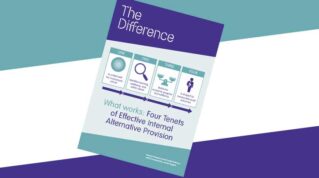The flurry of headlines in the days leading up to the publication of our latest report illustrates the systemic challenges facing special education needs (SEN) provision.
Soaring demand, rising costs and poor outcomes all point to the urgent need for reform, our report concludes. The Department for Education agrees.
Let us look briefly at the numbers involved, which are significant.
Between 2015 and 2024, there was a 140-per cent increase (to 576,000) in the number of children with an Education, Health and Care (EHC) plan alone.
Over the past decade, high-needs funding rose by more than half (58 per cent), to £10.7 billion for 2024-25. However, high-needs funding per plan fell by 35 per cent over the same period.
Meanwhile, local authorities face dedicated schools grant deficits of up to £4.6 billion by March 2026, which is when the mechanism preventing deficits hitting local authorities’ balance sheets is due to end. More than two-fifths (43 per cent) of local authorities could be left effectively declaring bankruptcy.
This is a coming storm. Four-fifths of local authorities responding to a Local Government Association (LGA) survey published on Tuesday identified SEN provision as a top-five pressure (behind child and adult social care).
DfE has been working on an improvement plan, but scores of SEN stakeholders – including nine local authorities we spoke with as we compiled our report – told us it is not sufficient to address the challenges.
Specifically, they highlighted the omission of crucial aspects including early intervention, inclusivity and workforce planning.
Nor will measures designed to reduce local authorities’ financial burdens limit growing deficits. Schools Week has documented how, of the dozens of councils signed up to so-called ‘safety valve’ arrangements designed to support councils with the highest shortfalls, only one has managed to eliminate its deficit.
Wholesale reform must be considered
Delivering Better Value, a programme introduced in 2022 to aid deficit-ridden local authorities without a ‘safety valve’ agreement, exceeded savings targets in 2022-23. Yet participating councils in both schemes are still forecasting cumulative deficits totalling £9.1 billion in 2028-29.
No wonder the National Audit Office (NAO) recommends DfE works urgently with HM Treasury and the Ministry of Housing, Communities and Local Government (an unprotected-spending department) to find a long-term solution which can stabilise local authorities’ finances.
All the while, this system is failing hundreds of thousands of children and their parents.
DfE recognises the scale of the challenge, and is actively exploring embryonic pilots to improve SEN provision. But there is no evidence these interventions will work, and DfE has failed to bring these together into an actionable, costed way forward.
The NAO recommends DfE draws on local authority insights to identify and share opportunities for improving how the system works.
So what’s to be done?
Put simply, the existing system is financially unsustainable and wholesale reform must be considered.
Secondly, greater data is desirable to both better understand the root causes behind mushrooming demand and capacity available to support children and young people with SEN.
Next, correcting misaligned incentives, accountabilities and priorities is a must, through designing a more integrated system comprising multi-disciplinary teams of health, education and local authority officials.
The current system costs more than £10 billion a year. To prevent a further flurry of headlines, the government needs to urgently consider how its current investment can be better spent.
This includes being clearer about how DfE will work towards a more inclusive education system, identify and address needs earlier, and develop a comprehensive approach to reform.
Read the full report, ‘Support for children and young people with special educational needs’ here












Your thoughts